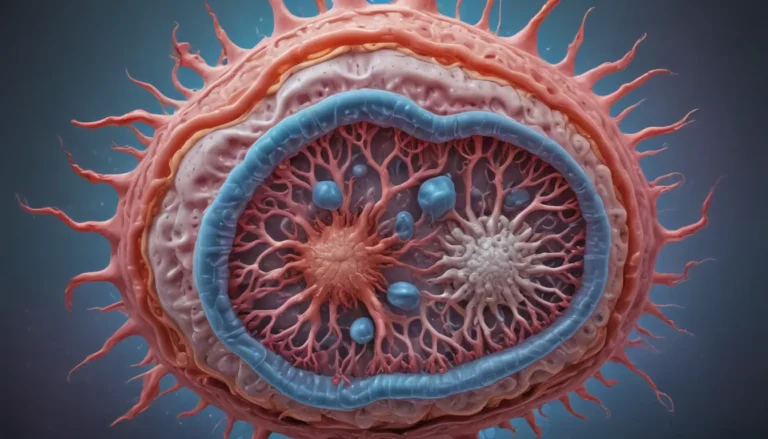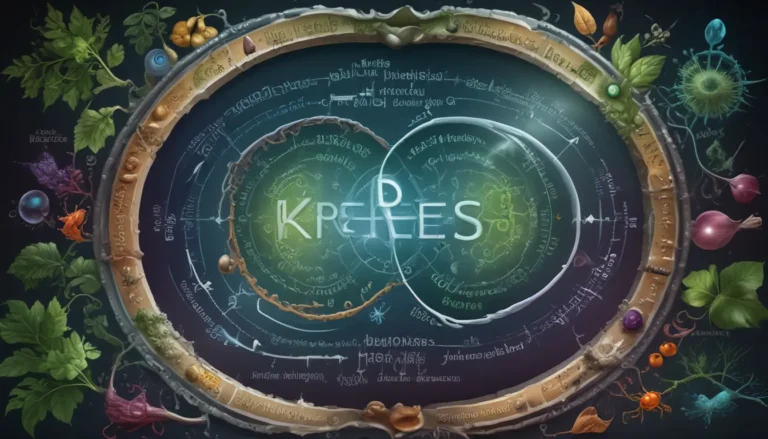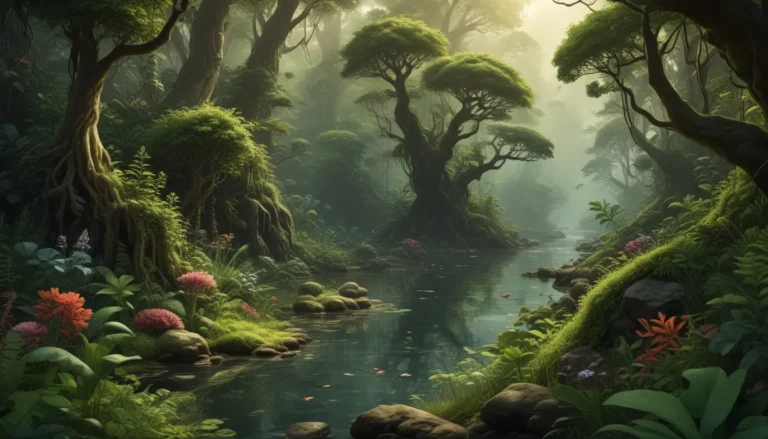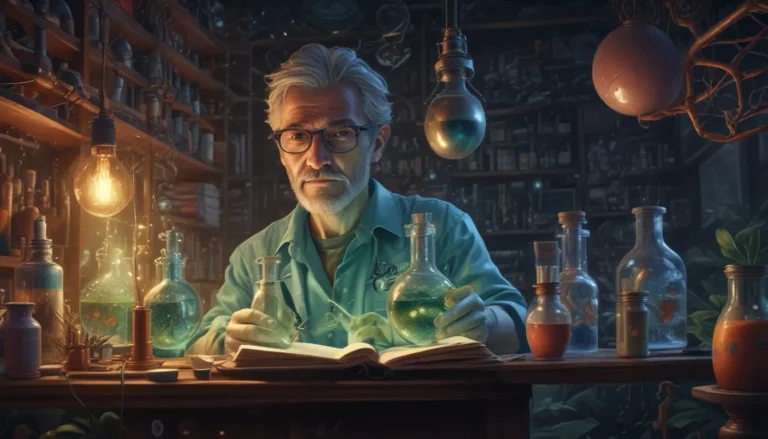A Note About Images: The images used in our articles are for illustration purposes only and may not exactly match the content. They are meant to engage readers, but the text should be relied upon for accurate information.
Bioluminescence, a captivating phenomenon found in various organisms, is a mesmerizing display of nature’s brilliance. From shimmering deep-sea creatures to glowing fireflies, the world of bioluminescence is filled with wonder and intrigue. In this article, we will uncover nine extraordinary facts that shed light on this remarkable biological phenomenon, exploring the reasons behind its existence, unique adaptations, and the diverse range of species that possess this luminous ability. Join us on a journey through the enchanting world of bioluminescence, and prepare to be amazed by the beauty and complexity of these extraordinary organisms.
Key Takeaways:
- Bioluminescence is a magical light show created by marine organisms using a chemical reaction. It serves as a form of communication, defense, and has ancient origins, captivating scientists and nature enthusiasts alike.
- From the deep sea to the land, bioluminescence is not just limited to underwater organisms. Fireflies and certain fungi also exhibit this enchanting phenomenon, adding a touch of magic to both the ocean depths and terrestrial landscapes.
Nature’s Light Show
The ocean comes alive with a mesmerizing spectacle as bioluminescent organisms light up the waters. From glowing algae to deep-sea fish and jellyfish, these creatures create a stunning light show that can be seen for miles. The beauty and diversity of marine bioluminescence never fail to captivate and inspire.
Chemical Reaction
Bioluminescence is the result of a fascinating chemical reaction within the organism’s body. This process involves a light-emitting molecule called luciferin, an enzyme called luciferase, and a source of energy such as ATP. When luciferin and luciferase interact, light is emitted, creating the magical glow that we associate with bioluminescent organisms.
Defense Mechanism
Bioluminescence is not only about showcasing oneself; it can also serve as a defense mechanism. Certain organisms use bioluminescence to confuse predators or create a diversion, allowing them to escape undetected. This adaptive trait highlights the survival strategies that have evolved in the natural world.
Communication in the Dark
For many marine creatures, bioluminescence plays a vital role in communication. Light signals are used to attract mates, warn off rivals, or coordinate movements within a group. In the darkness of the deep sea, bioluminescence serves as a beacon of communication, enabling these organisms to interact and navigate their environment effectively.
Ancient Origins
Bioluminescence is not a recent invention; it dates back millions of years. Fossils reveal that bioluminescent organisms have been present on Earth since the early days of life. This ancient history is a testament to the enduring beauty and functionality of bioluminescence as an extraordinary adaptation that has stood the test of time.
The Deepest Light
The deep sea is home to some of the most remarkable bioluminescent displays. Creatures like the anglerfish use their luminescent lures to attract prey in the pitch-black depths where sunlight doesn’t reach. These deep-sea organisms have evolved intricate mechanisms to produce light in the darkest corners of the ocean, showcasing the diversity of life in extreme environments.
Blue-Green Glow
Many bioluminescent organisms emit blue-green light, as these wavelengths can travel the farthest in water. This adaptation maximizes the visibility of the emitted light over greater distances, contributing to the mesmerizing and awe-inspiring light shows that illuminate the depths of the ocean.
Firefly Magic
Fireflies are iconic examples of land-based bioluminescence, lighting up summer nights with their synchronized blinking. Each species has its own unique flash pattern, creating a captivating natural spectacle that enchants viewers. The magical glow of fireflies adds a touch of wonder to terrestrial landscapes, showcasing the diversity of bioluminescent organisms beyond the ocean depths.
Bioluminescence Goes Terrestrial
While bioluminescence is commonly associated with underwater organisms, it also occurs in some terrestrial creatures. Certain fungi, glow worms, and insects exhibit bioluminescent properties, bringing a touch of magic to the land as well. These terrestrial bioluminescent organisms demonstrate the wide-ranging adaptations that have evolved throughout the natural world, highlighting the beauty and diversity of life on Earth.
In conclusion, the world of bioluminescence is a fascinating realm filled with wonders and mysteries. From the deep-sea creatures that glow in the ocean depths to the fireflies that light up terrestrial landscapes, bioluminescence continues to captivate scientists and nature enthusiasts alike. The ability of organisms to produce light through chemical reactions is a testament to the incredible diversity and adaptability of life on our planet. Bioluminescence serves as a defense mechanism, a means of communication, and a mesmerizing spectacle that illuminates the darkest corners of our world.
As we delve deeper into the study of bioluminescence, we uncover the secrets of these extraordinary organisms and gain insights into the intricate workings of nature. The future holds great potential for harnessing the power of bioluminescence in various fields, from medicine to environmental monitoring and artistic expression. With each new discovery, we enhance our appreciation for the incredible beauty and complexity of the natural world, marveling at the luminous wonders that exist both above and below the surface.
FAQs
Q: What causes organisms to bioluminesce?
A: Bioluminescence is caused by the interaction of a luciferin molecule and an enzyme called luciferase, resulting in the emission of light.
Q: Which organisms are known for bioluminescence?
A: Various organisms exhibit bioluminescence, including deep-sea creatures like anglerfish and jellyfish, fireflies, certain types of bacteria, and even some fungi.
Q: Why do organisms bioluminesce?
A: Bioluminescence serves multiple purposes, such as attracting mates, deterring predators, luring prey, and communicating within their species.
Q: Can bioluminescence be artificially replicated?
A: Scientists have been able to recreate bioluminescence in the laboratory by introducing luciferase genes into other organisms, enabling them to produce light.
Q: Are there any medical applications of bioluminescence?
A: Bioluminescent proteins are used in medical research and diagnostics, aiding in visualizing and tracking cellular processes in living organisms.
Q: How deep in the ocean does bioluminescence occur?
A: Bioluminescence is found throughout the ocean, from the surface waters to the greatest depths, where specialized organisms emit light through their unique adaptations.
Q: Do all fireflies emit the same color of light?
A: No, different species of fireflies emit varying colors of light, ranging from yellow and green to orange and even blue.
Q: Is bioluminescence a rare phenomenon?
A: Bioluminescence is more common than one might think, with an estimated 90% of marine organisms possessing the ability to produce light.
Q: Can bioluminescent organisms be found on land?
A: While bioluminescence is most commonly associated with marine environments, there are a few terrestrial organisms such as certain types of fungi that also exhibit this remarkable trait.
Bioluminescence is a remarkable phenomenon that continues to inspire and amaze us with its beauty and complexity. As we unravel the mysteries of these glowing wonders, we gain a deeper understanding of the natural world and the incredible adaptations that have evolved throughout the history of life on Earth. Join us in exploring the enchanting world of bioluminescence, where nature’s light shines bright in the darkness, illuminating the wonders that lie beneath the surface and beyond.






